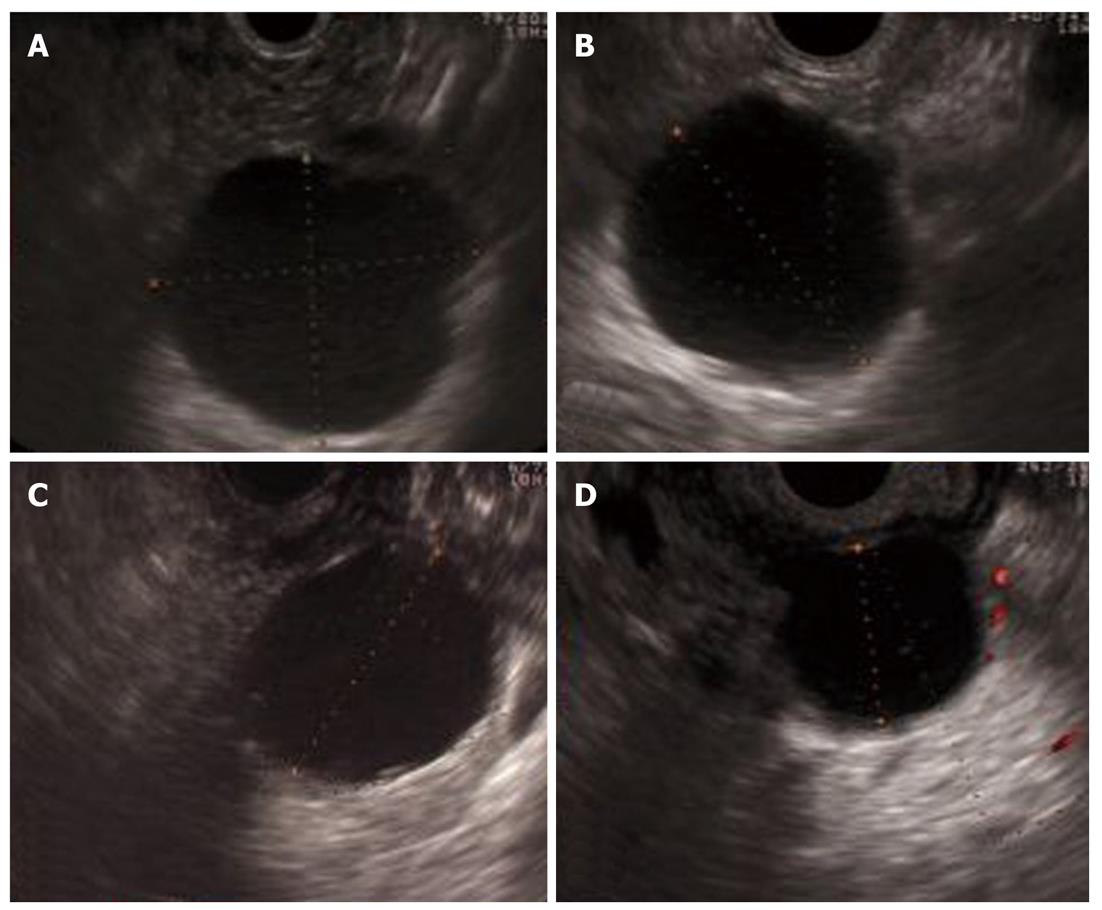Copyright
©2012 Baishideng Publishing Group Co.
World J Gastrointest Endosc. Jun 16, 2012; 4(6): 247-259
Published online Jun 16, 2012. doi: 10.4253/wjge.v4.i6.247
Published online Jun 16, 2012. doi: 10.4253/wjge.v4.i6.247
Figure 5 Unilocular aspects in cystic pancreatic lesions.
A: Sixty year old female, no symptoms. Lesion in pancreatic head, no visible communication with pancreatic duct. Carcinoembryonic antigen (CEA) 1.5 ng/mL, Amylase 125 U/L, K-RAS mutations negative. Cytology: Cuboidal cell periodic acid-Schiff positive, no mucus. Diagnosis: Unilocular serous cystoadenoma; B: Seventy-nine year old female, no symptoms. Multiple cystic lesion in pancreatic head and tail. Lesion in pancreatic tail with visible communication with pancreatic duct. CEA 12 000 ng/mL, amylase 12 870 U/L, K-RAS mutation positive. Cytology: Mucin and cuboidal cell with mild atypia and papillary arrangement. Diagnosis: Multifocal branch ducts-intraductal papillary mucinous neoplasm; C: Fifty year old female. Lesion in pancreatic body, no visible communication with pancreatic duct. CEA 280 ng/mL, amylase > 15 000 U/L, K-RAS mutation positive. Cytology: Acellular without mucin. Surgical histology: Mucinous cystoadenoma; D: Forty-five year old male, history of alcoholism and recurrent acute pancreatitis. Lesion in pancreatic body. CEA 61 ng/mL, amylase > 15 000 U/L, K-RAS mutations negative. Cytology: Inflammatory cells and pigmented histocytes. Diagnosis: Pancreatic pseudocyst.
- Citation: Barresi L, Tarantino I, Granata A, Curcio G, Traina M. Pancreatic cystic lesions: How endoscopic ultrasound morphology and endoscopic ultrasound fine needle aspiration help unlock the diagnostic puzzle. World J Gastrointest Endosc 2012; 4(6): 247-259
- URL: https://www.wjgnet.com/1948-5190/full/v4/i6/247.htm
- DOI: https://dx.doi.org/10.4253/wjge.v4.i6.247









